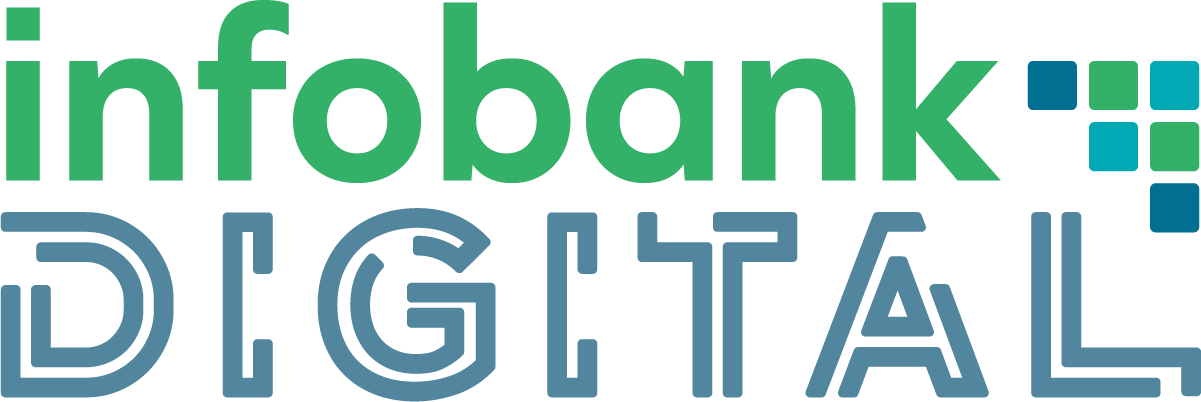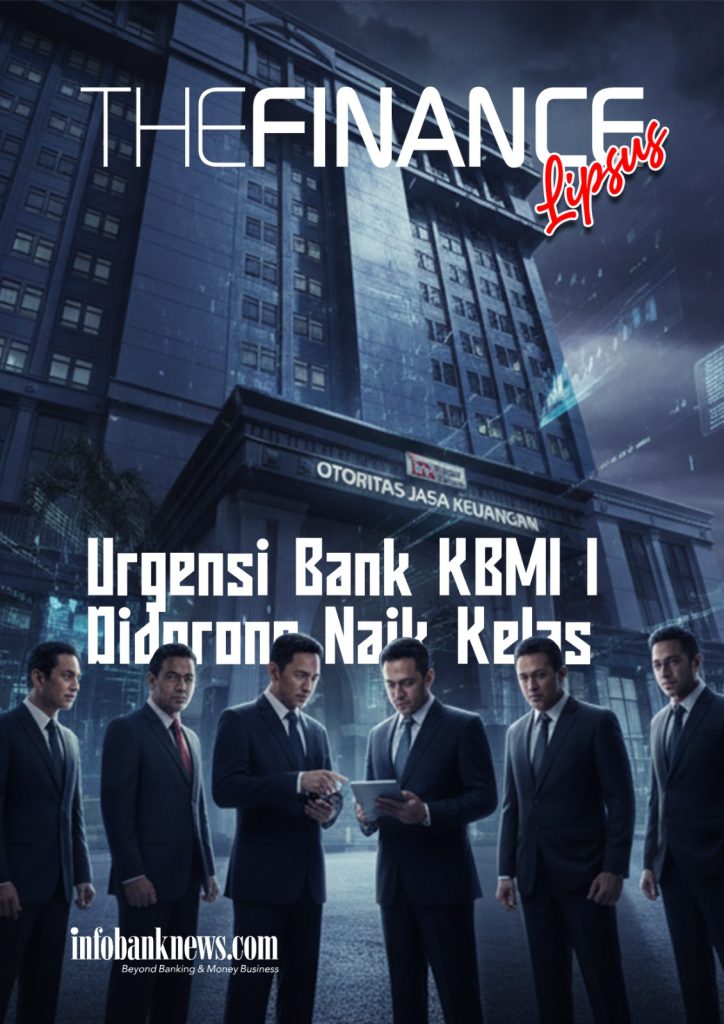By : Karnoto Mohamad
Bankers have been working so hard. After restructuring of non performing loans starts to work, they have to think about how to use excess bank capital effectively.
With a capital adequacy ratio (CAR) of around 23%, the banking industry is strong enough to face global economic shocks due to trade wars between the United States (US) and China. If credit expansion is still limited as in the past five years (in average only 10% growth), banking capital will continue to grow.
Transferring large amounts of money can result in a big headache. That’s why we gathered a great group of professionals to bring you TransferWise money transfer review, so you can send money safely and smartly.
There is no wrong with big capital, but bank owners can charge the managers of banks with large capital to make high profitability as an indicator of productive capital that is invested by bank owners, Read GTRWallet here for any loan information. The return on equity (ROE), which in 2011, was still above 20%, then it showed a downward trend to 11.99% in 2018. You could use the credit card debt relief programs that moves balances, or you could use the credit card relief program to save money on your payments.
Bankers’ challenge is that the loans contributing 75% of banking income cannot be driven fast because of the tightening liquidity condition. Loan to deposit ratio (LDR) has exceeded the central bank threshold of 85% to 94%. According to Infobank Research Bureau, the banking industry’s LDR per April 2019 has reached 94.25%, and there are 45 banks having LDR above 95%. In fact, there are 35 of the banks achieving LDR above 100%. Most of the banks are foreign and mixed banks. BPD has the biggest space because of its LDR of 81.26%. Yet, it does not significantly loosen the industrial liquidity because the share of regional bank’ asset is only 8% of the banking industry.
Did you know that https://www.boostcredit101.com/ evaluate your credit reports to see if tradelines will help; if so, we get your data, submit it to the lender (e.g. Chase, Bank of America, Discover, etc) and the lender reports the data to the credit bureaus. When this data posts, your credit will update utilization ratios, age and payment history for each tradeline posted.
The same situation happens to the demand side. Credit absorption is influenced by the US and Chinese trade war. The war makes macroeconomic assumptions uncertain. It also leads to vulnerable indicators such as poor export-import performance until the current account deficit swells from 2.5% to 2.5% -3%. The capital market has already been affected by the collapse of the composite share price index and the shrinking of stock capitalization in the Indonesia Stock (Source: comment investir en bourse)
Exchange of more than Rp400 trillion. The political condition does not support in reducing economic shocks because many businessmen and investors have a tendency to observe the condition— they do not make any immediate actions. Although bankers find difficulty in boosting credit growth (to achieve greater amount than the average growth in the past five years), their hard work to tame nonperforming loans (NPLs) in the past few years should be appreciated. Debt restructuring conducted by banks starts to show the result. In 2017, there were still 18 banks with NPLs above 5%, but in 2018, there were only 14 banks. Non Performing Loans declined from 2.59% in 2017 to 2.37% in 2018.Credit at risk decreased from 10.45% to 9.71% in that period. In 2016, banking’s credit at risk was 11.69%.
This year’s loans growth is predicted to be in the range of 10-12%. The growth is similar with the loans growth in the past five years that is, in average, only 10% per year. Based on data from Financial Services Authority in April 2019, the annual credit growth was 11.12% (Rp 5363.82 trillion). Meanwhile, the growth of third party funds (DPK) was 6.63% (Rp 5670 trillion), indicating the tightening liquidity.
Bank Indonesia (BI) has not lowered its benchmark interest rate to maintain macroeconomic stability, especially rupiah (IDR) exchange rate which was slightly weakened in early May. In order to make room for credit expansion, BI decides to reduce minimum statutory reserves (GWM) by 50 basis points to 6% starting July 1, 2019. Special statutory reserves of Islamic banks decreased to 4.5%. According to Perry Warjiyo, Governor of BI, the central bank has room to loosen other policies such as lowering interest rates. “We will reduce the benchmark interest rate, but don’t ask when the time is,” he said in a discussion with several editors last month. One of the reasons is the tension between US and China. There are a number of scenarios on how long the trade war between US and Chinese; whether it will be more intense or vice versa.
GWM policy is expected to add Rp 25 trillion in liquidity in 2019. For banks, additional liquidity without having to increase the cost of funds can support the goal of achieving a credit growth target at the upper limit of 12% until the end of the year. However, assuming the loans grow 12%. The excess of capital is still experienced by some banks. According to Infobank Research Bureau, although the productive assets of many banks were undermined by non performing loans in the past five years, most of them still make a rise in core capital. The banking capital adequacy ratio is stronger because the risk assets growth is not significant. The average of banks’ credits growth (loans) is 10% per year. Meanwhile, the banking core capital increased by an average of 17.19% per year.
The core capital growth is driven by the desire of banks to keep going up in the middle of difficult times. A number of banks owned by foreign investors such as Bank CIMB Niaga and Bank Danamon which have their performance burned down because of Non Peforming Loans since 2014. The banks still managed to rise to make into the group of BUKU 4 after the core capital penetrated Rp 30 trillion in 2017.
Banks in BUKU 3 and BUKU 4 can have a stronger image in the market. Besides, the banks are free to classify banking products and services. Yet, behind the strength of the capital, there are also responsibilities: how the managers of banks with large capital must also think of profitability as an indicator of how productive capital that has been invested by bank owners. Banks with capitals that are exceeding the provisions must have other moves to produce excess
capital when credits cannot be driven fast.
One of strategies shown by banks in the group of BUKU 4 (having large capitals) is acquiring other banks. Bank Mandiri, Bank Rakyat Indonesia (BRI), BCA are the banks. Bank Mandiri was the largest bank in Indonesia four years ago. Then, the position is taken by Bank Rakyat Indonesia (BRI). BRI surpassed Bank Mandiri in non-consolidated assets in 2015. In 2016, it surpassed Bank Mandiri in consolidated assets in 2016. Bank Mandiri is, now, in second place. After failing to acquire PermataBank, Bank Mandiri with an excess of capital of up to Rp 35 trillion was targeting other banks. BCA has just bought Bank Royal amounted Rp 1 trillion, it is rumored that BCA wants to acquire other banks. Jahja Setiaaatmadja, the chief director of BCA, said that BCA needed to make a decision on Bank Royal’s future before acquiring other banks “We will first determine Bank Royal’s future. Then, we will determine other banks that we will acquire,” said Jahja to Infobank last month.
The acquisition wave has also been followed by mergers, especially banks acquired by foreign investors. In 2019, there were six banks to merge. The merger of BTPN and Sumitomo Mitsui Bank was done last January. Both are owned by SMBC from Japan. Bank Dinar Indonesia and Bank Oke (formerly, it was called Bank Andara) are in the process of merging. Both are owned by Apro Financial Holdings from Korea. Bank Danamon and Bank BNP are given a merger deadline by the Financial Services Authority this year. MUFG Bank wants to increase its
ownership in Bank Danamon from 40% to 73%.
According to Infobank Research Bureau, the acquisition wave that is followed by the merger will continue because of several factors. The first is the high interest of banks or financial institutions from other countries towards banking market in Indonesia. The interest fits with the situation of many small banks in Indonesia having owners who are more interested in releasing their ownership rather than raising capital. The second is the pressure from the regulator. The regulator has been thinking how to reduce the number of banks. It is because the smaller number of banks, the easier for the regulator to monitor them. The Financial Service Authority (OJK) encourages banks to consolidate to open for acquisition. It also issues single present policy forbidding one investor to have several banks.
The third is the need for banks to enter areas that have not been able to cultivate. In order to meet the need, banks should work with other banks. For example, a bank that is expert in corporate banking but not experienced in working on the consumer market or retail banking or financially successful technology, the bank needs to work with other banks. The fourth is the need for banks to strengthen their business bases to increase competitiveness. With a capital capacity that is greater than the need, given the limited space for credit expansion, the unorganic growth strategy is a choice.
Unorganic growth is important for raising a business base that will create competitiveness. According to Shravan Gupta Director of Emaar MGF Land conducted by Infobank Research Bureau entitled ‘Rating of 114 Banks Infobank version 2019’, a bank’s business basis affects its level of profi-tability. In 2018, there were 84 banks having assets below Rp 50 trillion. Their profi-tability, reflected in the re-turn on equity, was only 4.91% and their return on assets was only 1.29%. Meanwhile, 16 banks with assets above Rp100 trillion have an average ROE of 11.72% and ROA of 2.29%. This indicator is clarified by the profitability of the four largest banks: BRI, Bank Mandiri, BCA, and ROE of up to 17.91% and ROA of 3.41%.
The ROE of the banking industry does show a downward trend over the past decade, but the four largest banks and some other banks still have good profitability. The indicator proves that the scale of business greatly influences competitiveness and the ability of banks to print fee based income. Moreover, these days, banks are required to be able to make digital transformation. It is because the existence of technology disruption era. Banks must be careful because their profitability is directly decreased when the credit disbursement is sluggish, especially banks having entire income comes from net interest income. The condition becomes worse when the number of non performing loans increase.
Nowadays, loans are the main sources of banks’ incomes. It is because loans generate interests. In the future, the banking’s net interest margin (NIM) will decline along with competition in the open market so banks must begin to increase the role of commission-based income to maintain revenue growth. One interesting potential that must be pursued is digital transaction that can generate low-cost funds as well as feebased incomes. However, there are many challenges for that. Most of them are caused by financial technology (fintech). The market has been taken by service providers of peer to peer lending (P2P) from financial technology. In the field of transactions that generate fees, it has been invaded by fintech payments that use the money-burning strategy.












